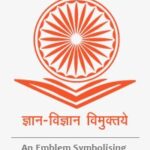
| View this in your browser. Founder: Dr Asheesh ShahThe Platform To Discuss Policy Issues and national interest DEFENCE :: FOREIGN AFFAIRS :: ECONOMY :: EDUCATION :: AGRICULTURE :: SCIENCE & TECHNOLOGY TRENDING STORIES Please click on the register button below to get in-depth stories on key policy issues.Register Can India take advantage of Us China crisis. India must Cement the ties under this global uncertainties while playing neutral.. The last three weeks or so were full of suspense and drama that unnerved a many in the United States and elsewhere. The United States shot down four objects flying in the sky at different locations. It is believed or rumoured that some of these objects were Chinese spy baloons that flew not only over the United States but also collected infromation over critical places that inclided nuclear facilities. The tension was so high that jets were scrambled in Europe, and a new display of public unity from South Korea and Japan was seen while debates raged over security in Britain.Not to be outdone, China criticized America for creating hype and exaggerating the baloons into a full blown crisis. It threatened for a bitter response to it. Hardly this crisis had subdued another got started with the visit of high ranking Chinese officer to Russia. While US alomg with other European countries are trying hard to beat and finish Russia for once and all, the visit and support of China to Russia could not have come at a worse timing for US China relations. US has also been curtailing important and critical chips and other things to China. All these have major implications not only for the world but also for India. A straight US China enmity puts India into a tight spotlight. Recall the talk of President Xi to PLA forces patrolling near Indian borders. We have covered that event and tried to analyse it some time back. We have said that its not a good sign and should not be taken as routine. Sooner or later India will have to choose sides or learn to say No, which ofcourse will not be liked. However India can take advantage of this growing rift between US China in multiple ways. We put a few points here :- 1. Technological collaborations: Over the past few years India and US have done well to come closer esp in the realm of Technology. Just a month ago, President Biden and PM Modi made a statement that said, ” The U.S.-India initiative on Critical and Emerging Technology (iCET) in May 2022 to elevate and expand our strategic technology partnership and defense industrial cooperation between the governments, businesses, and academic institutions of our two countries. The United States and India affirm that the ways in which technology is designed, developed, governed, and used should be shaped by our shared democratic values and respect for universal human rights. We are committed to fostering an open, accessible, and secure technology ecosystem, based on mutual trust and confidence, that will reinforce our democratic values and democratic institutions. “Simultaneously, the two National Security Advisors of both countries, led the inaugural meeting of the iCET in Washington, DC. They were joined on the U.S. side by the Administrator of the National Aeronautics and Space Administration, the Director of the National Science Foundation, the Executive Secretary of the National Space Council, and senior officials from the Department of State, Department of Commerce, the Department of Defense, and the National Security Council. On the Indian side, the Ambassador of India to the United States, the Principal Scientific Advisor to the Government of India, the Chairman of the Indian Space Research Organization, the Secretary of the Department of Telecommunications, the Scientific Advisor to the Defense Minister, the Director General of the Defence Research and Development Organization, and senior officials from the Ministry of Electronics and Information Technology and the National Security Council Secretariat participated. The two sides discussed opportunities for greater cooperation in critical and emerging technologies, co-development and coproduction, and ways to deepen connectivity across our innovation ecosystems. They noted the value of establishing “innovation bridges” in key sectors, including through expos, hackathons, and pitch sessions. They also identified the fields of biotechnology, advanced materials, and rare earth processing technology as areas for future cooperation. To expand and deepen our technology partnership, the United States and India are launching new bilateral initiatives and welcoming new cooperation between our governments, industry and academia in the following domains:Strengthening our Innovation Ecosystems Signing a new Implementation Arrangement for a Research Agency Partnership between the National Science Foundation and Indian science agencies to expand international collaboration in a range of areas — including artificial intelligence, quantum technologies, and advanced wireless — to build a robust innovation ecosystem between our countries. Establishing a joint Indo-U.S. Quantum Coordination Mechanism with participation from industry, academia, and government to facilitate research and industry collaboration.Drawing from global efforts to develop common standards and benchmarks for trustworthy AI through coordinating on the development of consensus, multi-stakeholder standards, ensuring that these standards and benchmarks are aligned with democratic values.Promoting collaboration on High Performance Computing (HPC), including by working with Congress to lower barriers to U.S. exports to India of HPC technology and source code.Defense Innovation and Technology CooperationDeveloping a new bilateral Defense Industrial Cooperation Roadmap to accelerate technological cooperation between both countries for the joint development and production, with an initial focus on exploring projects related to jet engines, munition related technologies, and other systems.Noting the United States has received an application from General Electric to jointly produce jet engines that could power jet aircraft operated and produced indigenously by India. The United States commits to an expeditious review of this application. Enhancing long-term research and development cooperation, with a focus on identifying maritime security and intelligence surveillance reconnaissance (ISR) operational use cases.Launching a new “Innovation Bridge” that will connect U.S. and Indian defense startups.Resilient Semiconductor Supply ChainsEnhancing bilateral collaboration on resilient semiconductor supply chains; supporting the development of a semiconductor design, manufacturing, and fabrication ecosystem in India; and leveraging complementary strengths, both countries intend to promote the development of a skilled workforce that will support global semiconductor supply chains and encourage the development of joint ventures and technology partnerships on mature technology nodes and packaging in India. Welcoming a task force organized by the U.S. Semiconductor Industry Association (SIA) in partnership with the India Electronics Semiconductor Association (IESA) with participation from the Government of India Semiconductor Mission to develop a “readiness assessment” to identify near-term industry opportunities and facilitate longer-term strategic development of complementary semiconductor ecosystems.This task force will make recommendations to the Department of Commerce and the India Semiconductor Mission on opportunities and challenges to overcome in order to further strengthen India’s role within the global semiconductor value chain, and will also provide input to the U.S.-India Commercial Dialogue. The task force will also identify and facilitate workforce development, R&D including with respect to advanced packaging, and exchange opportunities to benefit both countries.SpaceStrengthening cooperation on human spaceflight, including establishing exchanges that will include advanced training for an Indian Space Research Organization (ISRO)/Department of Space astronaut at NASA Johnson Space Center. Identifying innovative approaches for the commercial sectors of the two countries to collaborate, especially with respect to activities related to NASA’s Commercial Lunar Payload Services (CLPS) project. Within the next year, NASA, with ISRO, will convene U.S. CLPS companies and Indian aerospace companies to advance this initiative.Initiating new STEM talent exchanges by expanding the Professional Engineer and Scientist Exchange Program (PESEP) to include space science, Earth science, and human spaceflight and extending a standing invitation to ISRO to participate in NASA’s biannual International Program Management CourseStrengthening the bilateral commercial space partnership, including through a new U.S. Department of Commerce and Indian Department of Space-led initiative under the U.S.-India Civil Space Joint Working Group. This initiative will foster U.S.-India commercial space engagement and enable growth and partnerships between U.S. and Indian commercial space sectors.Welcoming the visit this week by the ISRO Chairman to the United States, as well as a visit to India by the NASA Administrator later in 2023. Expanding the agenda of the U.S.-India Civil Space Joint Working Group to include planetary defense.Science, Technology, Engineering and Math Talent:Noting a new joint task force of the Association of American Universities and leading Indian educational institutions, including Indian Institutes of Technology, which will make recommendations for research and university partnerships.Next Generation Telecommunications:Launching a public-private dialogue on telecommunications and regulations.Advancing cooperation on research and development in 5G and 6G, facilitating deployment and adoption of Open RAN in India, and fostering global economies of scale within the sector. The United States and India look forward to the next iCET meeting in New Delhi later in 2023. The National Security Councils of both countries will coordinate with their respective ministries, departments and agencies to work with their counterparts to advance cooperation, and to engage with stakeholders to deliver on ambitious objectives ahead of the next meeting. Conclusion This is a good opportunity for India to cement further ties with the United States and especially in Scientific and Technological areas. To be a good partner both sides must show long lasting commitment and shared values. India has to plan its Foreign Policy very well in days to come. While we cannot abandon Russia we also have to not loose this oportunity with the United States. As the Us China Russia axis further creates tremors and fissures India has to walk on Tight rope. International relations has become very uncertain these days. It is difficult to be dependent totally on one nation and put all the eggs in one basket. And yet the events are driving that will require to be prepared and decisive. We dont think India will be in a position to take full sides with the US, or can afford to abandon Russia in the near future. The manner in which China has suddenly started showing its friendship for Russia is also worrisome and India cannot leave Russia at this point. The best thing under the circumstances will be to leverage as much collaboration with the United States and keep the status quo with Russia. Both the countries have to strenthen ties in technology and commerce. Similalry QUAD commitment should not be diluted. Other strategic alliances like AUKUS etc can wait meanwhile. India is in a bargaining position and must negotiate with equal if not higher seat. China will keep testing India on its borders to threaten and blackmail it. This seems to be now a very well established policy. Overall this is a good opportunity for India to take advantage on various fronts both with Russia and America while give a FIRM posture to China . Reference: https://www.whitehouse.gov/briefing-room/statements-releases/2023/01/31/fact-sheet-united-states-and-india-elevate-strategic-partnership-with-the-initiative-on-critical-and-emerging-technology-icet/#:~:text=President%20Biden%20and%20Prime%20Minister,institutions%20of%20our%20two%20countries.Dr Asheesh Shah Samanvaya.org.in |
Very interesting, thanks for sharing.
Show quoted text
0

